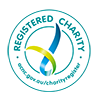World Sickle Cell Day (June 19th) is an important occasion to raise awareness about this inherited blood disorder that affects millions of people worldwide. While sickle cell disease (SCD) is more commonly found in populations of African, Middle Eastern, and Mediterranean descent, it is essential to understand that it can affect individuals from any ethnic background, including Australians. In this blog post, we will explore what sickle cell disease is, its symptoms, available treatments, and the significance of raising awareness about this condition.
What is Sickle Cell Disease?
Sickle cell disease is a genetic disorder that affects the red blood cells. This disease is an inherited condition. It is caused by a mutation in the gene responsible for producing hemoglobin, the protein that carries oxygen throughout the body. This mutation leads to the production of abnormal hemoglobin, known as hemoglobin S. Under certain conditions, the red blood cells become rigid and shaped like crescents or sickles, hence the name “sickle cell.” This abnormal shape causes the cells to get stuck in blood vessels, leading to reduced oxygen supply to various organs and tissues. Usually red blood cells live for 120 days before being replaced. But sickle cells last only 10 to 20 days which causes a shortage of red blood cells.[1]
Symptoms and Signs of Sickle Cell Disease
The signs and symptoms of sickle cell disease can vary from person to person, and they may appear in early childhood from 6 months of age. Common symptoms include:
- Episodes of severe pain known as “sickle cell crises.”
- Fatigue and shortness of breath.
- Increased susceptibility to infections.
- Delayed growth and development in children.
- Swelling and pain in the hands and feet.
- Yellowing of the skin and eyes (jaundice).
- Vision problems.
- Stroke, acute chest syndrome, and other serious complications in severe cases.
If your child displays any of these symptoms, it’s important to seek health advice from a health care provider straight away. Children with sickle cell disease are more prone to infections which may become life-threatening.[2]
Treatment for Sickle Cell Disease
While there is currently no cure for sickle cell disease, various treatment options are available to manage its symptoms and complications. These may include:
- Pain management: Medications, such as nonsteroidal anti-inflammatory drugs, and other pain relievers, are used to alleviate the pain during sickle cell crises.
- Blood transfusions: Transfusions can help increase the number of normal red blood cells and reduce the risk of complications.
- Hydroxyurea: This medication stimulates the production of fetal hemoglobin, which can prevent the sickling of red blood cells and reduce the frequency of crises.
- Bone marrow or stem cell transplantation: In certain cases, a transplant of healthy bone marrow or stem cells from a compatible donor may offer a potential cure for sickle cell disease.
The Importance of Raising Awareness of Sickle Cell Disease
Raising awareness about sickle cell disease is crucial for several reasons:
- Early diagnosis and treatment: Increased awareness can lead to early identification of the disease, enabling timely interventions and appropriate management.
- Support for patients and families: Awareness initiatives help create support networks and resources for individuals living with sickle cell disease and their families, promoting a sense of community and understanding.
- Research and funding: By raising awareness, we can encourage governments, organisations, and individuals to invest in research, clinical trials, and the development of new treatments and therapies.
- Education and prevention: Awareness campaigns help educate the public about the importance of genetic counselling and carrier screening to reduce the incidence of sickle cell disease in future generations.
[1] https://www.healthdirect.gov.au/sickle-cell-anaemia
[2] https://www.mayoclinic.org/diseases-conditions/sickle-cell-anemia/symptoms-causes/syc-20355876


